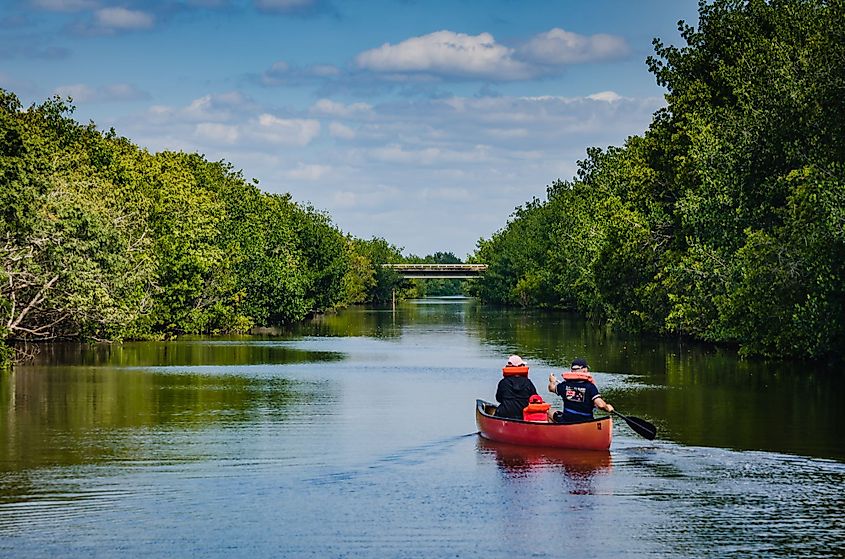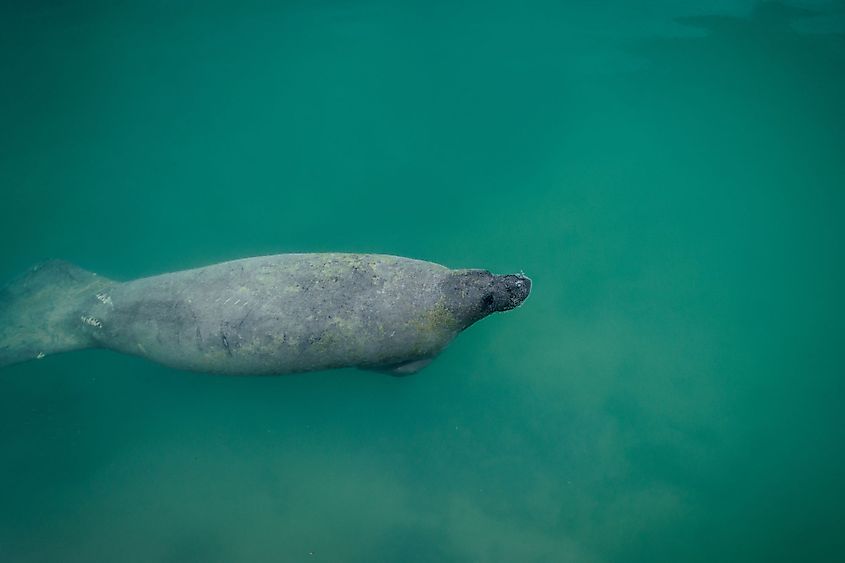
Biscayne National Park, Florida
Biscayne National Park is a reef and an island sanctuary in the northern Florida Keys, in the state of Florida, United States. The park is mainly a coastline reserve that focuses on protecting the tropical waters, coral reefs, and mangrove swamps, and is primarily aquatic. The park has an area of roughly 700 sq. km of land and ocean, including a large section of the Florida Reef.
History

The area of the Florida Keys has been used as a destination and getaway for wealthy Americans for decades. Especially through the 1960s and 70s, the Keys were booming and becoming more populated. Because of this, the area was named a National Monument in 1968, in order to protect the natural habitat and landscape of the keys and reef. In 1980, the monument officially became the Biscayne National Park.
Location

The area inside the park is part of the Miami-Dade County, and extends in the southerly direction from Key Biscayne almost all the way to Key Largo. Various islands, or keys, are included within the park borders, including Soldier Key, the Ragged Keys, Sands Key, Elliott Key, Totten Key and Old Rhodes Key.
On the eastern side of the park, an ocean wall of 18 meters drops away from the reef, forming a natural boundary. Similarly, to the west, the park border is a small strip of coastline along the edge of mainland Florida which includes Mangrove Point and Cutler Ridge.
Plant and wildlife

Roughly 95% of the park is water, meaning the landscape within it is almost exclusively aquatic, or semi-aquatic. There are four distinct ecosystems within Biscayne: the shoreline mangrove maps, the shallow water bay, the coral limestone keys, and the offshore Florida Reef. Each of these ecosystems play a key role in the functioning of the park at large, and has distinct vegetation and wildlife.The keys contain much of the land-based vegetation in the area, including various types of palm trees and cacti. Island shores are mainly sandy and open, and are therefore excellent for nesting turtles. Both the endangered green turtle and hawksbill turtles live in these waters.

Along the shorelines, especially in the dense mangrove swamps, fish hatchlings can seek shelter and protection from predators. Similarly, larval fish molluscs and crustaceans can usually be found ticked among the twisting roots and thick branches of the semi-aquatic mangroves. As the fishes age, they move from the shores to the shallow waters of Biscayne Bay. Seagrass is common in the harbour, as well as soft corals and sea sponges. This provides an ideal habitat for growing fish and manatees. The reefs offshore and in the deeper water are where the densest population of marine wildlife lives. Fish are abundant here, and there have been over 200 different species recorded in these waters. The deeper ocean also sees whales, in warm seasons, as well as dolphins and pelicans.











